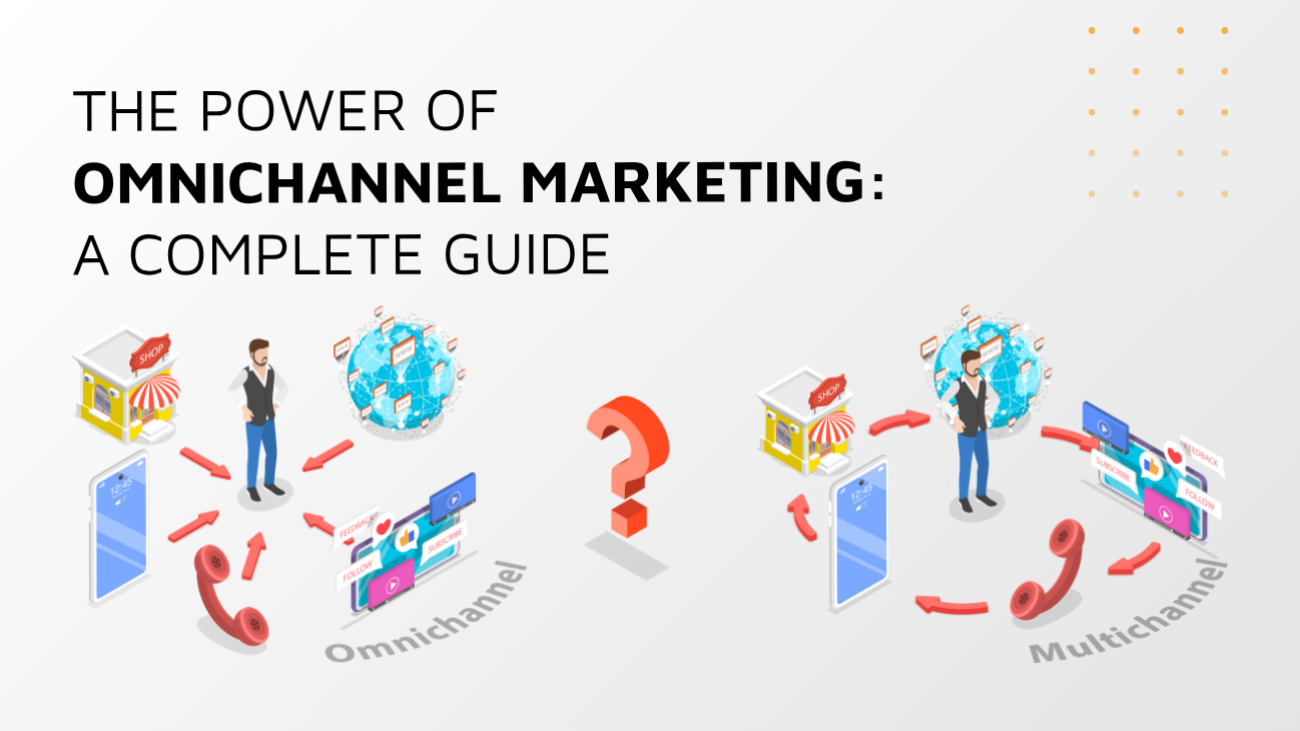The Power of Omnichannel Marketing: A Complete Guide
In today’s fast-moving digital world, customers interact with brands across multiple platforms. From social media and email to in-store visits and mobile apps, their journey isn’t limited to just one channel. This is where Omnichannel Marketing comes in, a strategy that ensures a consistent, seamless, and personalized customer experience across all touchpoints.
Unlike multichannel marketing, where channels operate independently, omnichannel marketing emphasizes integration. It connects every channel so that customers feel like they are dealing with one brand, no matter how or where they interact.
What is Omnichannel Marketing?
Omnichannel marketing is a customer experience strategy that combines different communication and sales channels into one connected journey. It’s about creating a smooth experience where the customer feels understood and valued at every step.
Example: Imagine a customer browsing shoes on your mobile app. Later, they see a personalized ad for the same shoes on Instagram, then get an email reminder with a discount code, and finally, they walk into your store to try them on. That’s omnichannel marketing in action; every channel works together to guide the customer.
Now, picture the same customer browsing shoes on your mobile app. Later, they see a generic shoe ad on Instagram that isn’t related to their search. They also get a promotional email about a different sale. When they visit the store, the staff does not know their online browsing history. Here, all channels, app, Instagram, email, and store are active, but they operate separately. Each channel runs on its own without sharing data or creating a connected journey.
Why Omnichannel Marketing Matters
Customers today expect more than just ads or promotions. They want personalized marketing approaches and consistency. Research shows that businesses using omnichannel strategies achieve:
- Higher customer retention: Customers are more loyal when they enjoy a connected journey.
- Better engagement: Consistent brand messaging across channels builds trust.
- Increased revenue: Shoppers who interact with multiple channels tend to spend more.
In short, omnichannel marketing isn’t just about reaching people, it’s about connecting with them meaningfully.
Key Benefits of Omnichannel Marketing
Here are some ways it transforms businesses:
- Consistency in Brand Messaging
Customers see the same message across email, social media, websites, and in-store. This builds brand recognition and reliability. - Improved Customer Experience
By creating a cross-channel customer journey, customers feel understood and cared for, leading to higher satisfaction. - Better Data Insights
Integrating channels helps businesses understand how customers behave and what they want. This leads to smarter decisions. - Personalization at Scale
With the right tools, businesses can send tailored messages based on customer preferences, purchases, or browsing history.
Omnichannel vs. Multichannel: What’s the Difference?
Here’s a simple table to compare the two approaches:
Feature | Multichannel Marketing | Omnichannel Marketing |
Channel Focus | Multiple independent channels | Integrated marketing channels |
Customer Experience | Disconnected, may feel repetitive | Unified, seamless, and consistent |
Personalization | Limited | Strong, customer-centered |
Data Sharing | Channels don’t share insights | Channels share data for better targeting |
Goal | Reach customers everywhere | Create one smooth journey across touchpoints |
This shows that omnichannel is not just more advanced, it’s more customer-focused.
How to Implement Omnichannel Marketing
Building an omnichannel strategy doesn’t happen overnight. Here are the key steps:
1. Understand Your Customer Journey
Map out how customers interact with your brand, from discovering you on social media to making a purchase and beyond. This helps you identify the right channels to integrate.
2. Integrate Your Channels
Bring together all touchpoints, including social media, websites, mobile apps, physical stores, and call centers. The goal is to create digital marketing consistency across them all.
3. Use Data for Personalization
Collect data from all channels and use it to offer personalized marketing approaches. For example, if a customer adds an item to their cart but doesn’t buy, send them an email reminder or an app notification with a discount.
4. Leverage Technology
Marketing automation tools, customer relationship management (CRM) systems, and analytics platforms make it easier to integrate channels and analyze customer behavior.
5. Test and Improve
Omnichannel strategies require constant testing. Use A/B testing, track performance, and improve your campaigns based on data insights.
Real-World Examples
- Starbucks: Their app allows customers to order online, collect rewards, and even pay in-store, all connected in one smooth system.
- Sephora: Customers can shop online, get personalized recommendations, and pick up in-store, while their loyalty program tracks all interactions.
- Khaadi: Their mobile app, social media, website, and stores are all linked to provide customers with a consistent brand experience.
These examples show how powerful omnichannel marketing can be when done right.
Challenges to Consider
While omnichannel marketing offers many benefits, it comes with challenges such as:
- Managing data across multiple platforms.
- Keeping messaging consistent while still personalizing it.
- Training staff to handle integrated systems.
With the right planning and technology, these challenges can be overcome.
Conclusion
Omnichannel Marketing is more than just a trend; it’s the future of customer engagement. By integrating all your marketing channels, focusing on personalization, and ensuring digital marketing consistency, you can create a seamless customer journey that builds loyalty and drives sales.
Customers don’t just want to shop; they want experiences. And omnichannel marketing is the key to delivering those experiences.

